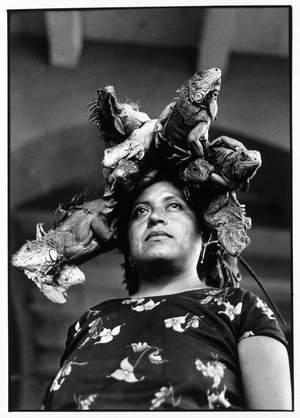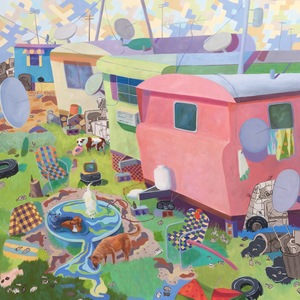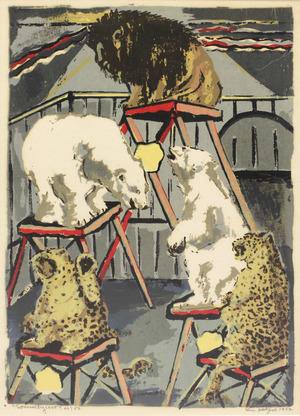Menagerie
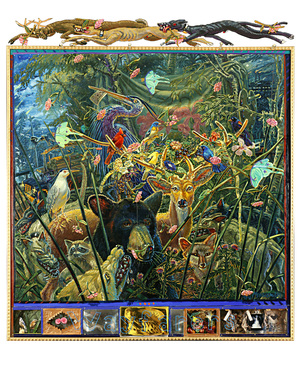
Creating images of animals is as old as art itself; from the earliest cave paintings to today’s cutting-edge installation art, artists have created thousands of ways to depict our furred and feathered friends. Whether animals are portrayed as companions, entertainers, specimens, prey or beasts of burden they continue to inspire depiction in a wide variety of media.
In an age when we rarely engage nature first-hand while simultaneously longing for a utopian world devoid of human intervention, many contemporary artists have chosen to use animals in their work as metaphor or messenger. Earlier artists such as John James Audubon (1785-1851) undertook the daunting scientific experiment of documenting the birds of North American creating books and portfolios detailing each species in their natural habitat.
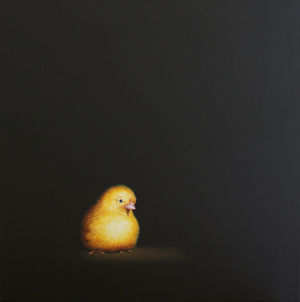
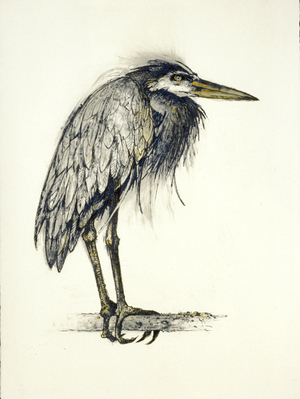
In many cultures today, ancient traditions prevail through artists who follow time honored customs. Current Inuit artists, Etidlooie Itulu, Seepee Ipellie and Nanalook recreate shamanistic artifacts carving bone, indigenous rock and horn into arctic bears, seals and walruses as did their ancestors. Celebrated contemporary Taos Pueblo sculptor Ralph Suazo carves eagles, hawks, owls and loons from wood celebrating the relationship between the Pueblo people and the natural world. Photography can also be a powerful documentary method to record cultural traditions. One of the most enduring images of Zapotec life is the photograph Nuestra Señora de las Iguanas (Our Lady of the Iguanas) by Graciela Iturbide. Brazilian photographer, Sebastião Salgado’s images from a series in Ecuador is a reminder of rituals that appropriate animal power in dance and costume.
The ancient Greek myth of the fatal vanity of Narcissus is reimagined by Teresa Gomez Martorell in an intaglio print with a wolf in the role of Narcissus. Aesop’s fables and fairy tales often feature animals with human characteristics as seen in William B. Montgomery’s print, Prince of Toads. Angry Heron by John Alexander demonstrates the power of anthropomorphic imagery. Animals also are great props for humor as demonstrated by the art of Vera Barnett, Lindy Chambers and Luke Sides. Helen Altman is inspired by Important relationships with individual animals. David Bates, Mark Messersmith and Melissa Miller present nature embellished and embed their artwork with complex messages and references to concern for dwindling natural habitats. Linda Ridgway’s intricate works on paper are laden with nostalgia of past representations of dogs as decorative elements.
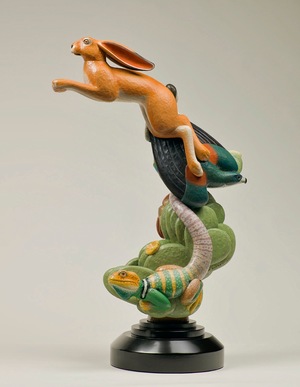
Menagerie explores the many ways in which animals fascinate and frighten us with their grace, humor, strength and mystery through art. The artists and the animals that are part of this exhibition challenge us to examine our involvement in the lives of animals in the wild, at home, at play and at work. They also remind us to be mindful of the animal kingdom and the planet we all share.
